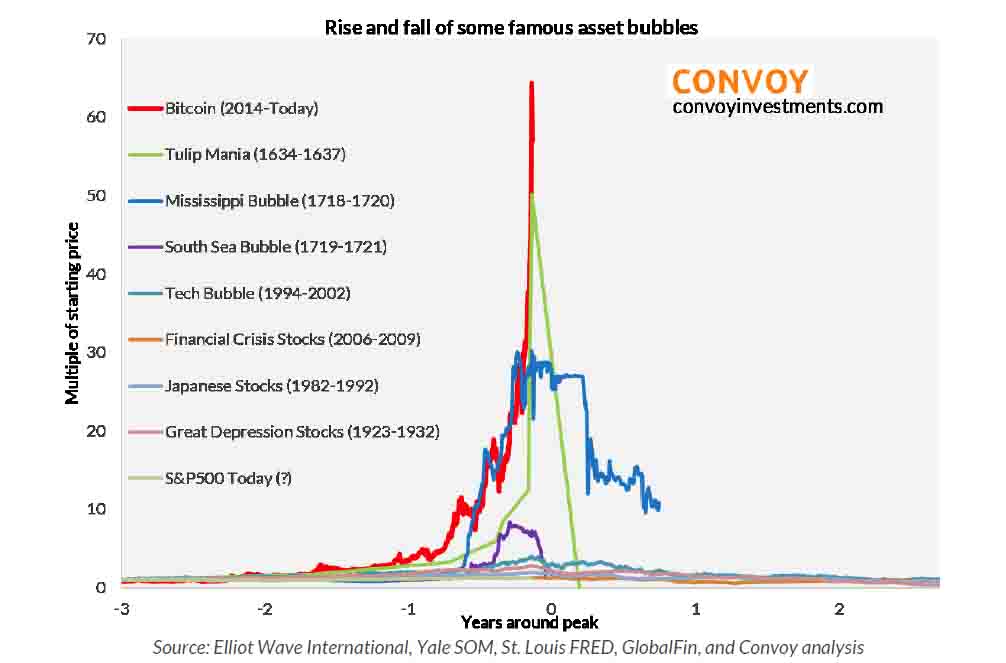Thar she blows:

At least with a tulip you get to plant the bulb again next year and you a get pretty flower. Bitcoin is the first ever global pyramid scheme and bubble. It is cloaked in all kinds of balderdash to hide the simple fact that it is a completely worthless private currency that belongs in the nineteenth century. But that’s going to take some time to become clear. So the pyramid bubble may go much higher yet.
How high? No idea. But my basic notion is that Bitcoin can run until it becomes too big to succeed. At $300bn or so today it is chump change. We’ll need to be in the trillions, I suspect, before governments wake up.
The gold market is worth USD 7.5tr and that’s the target offered by the Winklevoss twins who claim BTC is a gold disruptor. The notion is clever in that it makes BTC a reserve asset rather than a tradable currency, taking away some of the contentiousness about how it might be used as a medium of exchange. But it is also absurd given BTC volatility, it’s absolute worthlessness, it’s lack of physicality, and vulnerability when all that fancy tech goes dark the moment war breaks out. Such a valuation benchmark is somewhere between fantasy and arbitrary.
How big is too big then? If were to run to $150k with a $3tr market then that would surely raise a few eyebrows. If that’s big enough for governments to take notice then when they move to regulate it, absorb it, or shut it down, and it falls 90% in value, then it is probably enough to cause ripples in the global economy. The US sub-prime mortgage market was USD 1tr and that blew up the world but largely because it was the lynch-pin holding up a giant edifice of leverage in wider, global housing markets.
The BTC implosion will do much less harm. But how much depends upon how much leverage is being used to gamble on it through the blow-off. My guess is it will be substantial. If $1tr of BTC debt were suddenly under water globally that would exacerbate the negative effects. But if is evenly spread is still not enough to derail markets.
My greatest concern is psychological. BTC is developing a symbiosis with the business cycle. Indeed, I see at as not much more that the latest inflation outburst of a loony monetary cycle. As central banks tighten, China slows and the Trump boom comes off into late next year or 2019, a BTC bust of the magnitude discussed may be just the Minsky moment that the global business cycle needs to pull the plug on the whole lot. That wouldn’t be so bad. A 40-50% stock bear market and recession is the norm.
The worst case scenario is that BTC is allowed to run much further into multiple, global rehypothecation scenarios that penetrate the global banking system. God help us all if BTC becomes too-big-to-fail.
For those of you who dare, we are going to do a big MB Fund webinar on Thursday at 12.30pm dedicated entirely to Bitcoin:
Bitcoin or Bitcon?
Damien Klassen, David Llewellyn Smith and Tim Fuller discuss the pros and cons of the uber-popular cryptocurrency and what it can mean for your porfolio. It will include live Q&A.
All are welcome. Sign up here.


